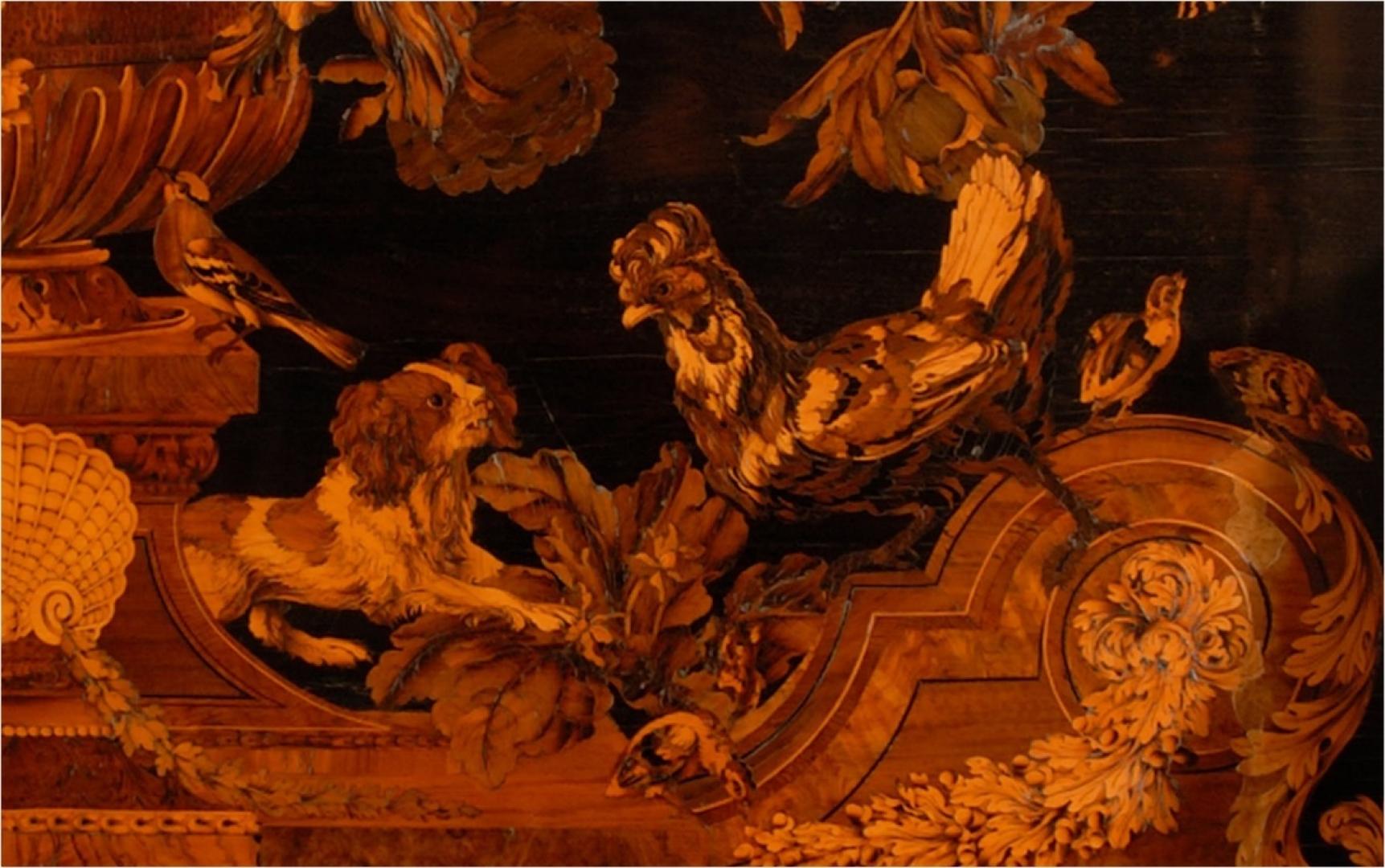In an occasional column, Dorothy Blundell takes a sideways look at the collections of The Bowes Museum where she is a volunteer….
THERE are dogs almost everywhere you look in The Bowes Museum. From hunting hounds, ladies’ companions and children’s pets, our four-legged friends can be found in furniture, ceramics, metal and paintings.
The founders, John and Josephine Bowes, were dog lovers and owned a succession of them during their lifetime.
An especial favourite was Bernadine, the yellow labrador with amber eyes, who appears twice: once at Josephine’s feet in the Antoine Dury painting and again by the same artist in her own portrait. This work is notable not just for its sentimental significance, but because it is thought to be the first image of a yellow labrador.
Another dog-only portrait is the Dog of the Havana Breed by Jean Jacques Bachelier (1724-1806). Though at first glance it can be mistaken for a poodle, it is the national dog of Cuba, known as a Havanese Silk dog because of its soft and fluffy coat.
At John’s feet in his portrait by Eugene Feyen, there is a small terrier, possibly a Skye terrier. This breed was used to hunt otters, foxes and badgers and was considered the aristocrat of its class as it lived indoors with the family and not in outside kennels with the rest of the hounds.
Though hunting is not a pastime in which John indulged, among his early purchases was A Boar Hunt by Frans Snyders (1579-1657). It cost him £60 and shows all the savagery of a pack of hunting dogs bringing down a wild boar. It is not currently on display.
But let’s begin with the king of the kennel, the Oriental lion dog, also known as Foo Dogs and which can be traced back to the Han Dynasty (206 BCE-211CE). Figures of these lion-like mythical creatures were placed at the entrances of palaces, temples, and homes to guard, protect and ward off negative energy.
Also in ceramics there are pugs, greyhounds, whippets and all manner of spaniel types, whether on their own or as part of a bigger scene. There is a pampered pooch made in Germany in 1768 which has own plush cushion and gilded ornate collar tied in a bow at the back.
In the Lady Ludlow Collection there are “dismal hounds” (that’s their title) made by Bow and a charming “Boy with macaroni dog” . No, this is not a forgotten breed, but an 18th century description of an extravagantly dressed aristocrat.
The figure dates from around 1830-35 and was made by Robert Bloor & Co, Derby, from an 18th century model which originally would have been paired with a ‘Girl with cat’. See how the small dog is wearing a fine red coat while his master holds the tiny tricorn hat to complete the outfit.
Looking for playful pups? Check out the detail from the remarkable 17th century Boulle marquetry panel of the Warwick Cabinet and you will find a spaniel chasing a hen.
In the 19th century picture gallery is a dog pretending to be a horse in a game with his young master. This painting was exhibited by the artist Antoine Claude Fleury (1743-1822) in 1802, and will doubtless resonate with parents today who witness similar occurrences in households where small children reside with large dogs.
Next time you go “walkies” through the galleries at The Bowes Museum, see how many canny canines you can spot.
l On May 28, starting at 11am, The Bowes Museum is hosting CorgiFest Dog Day in the museum grounds as part of the Queen’s Jubilee celebrations. Other dogs are welcome. The event has a host of novelty classes for which entry fee applies. Admission to the grounds is free.





